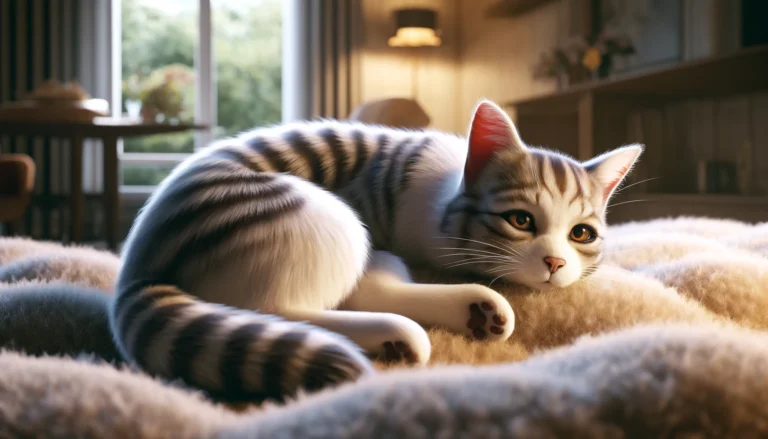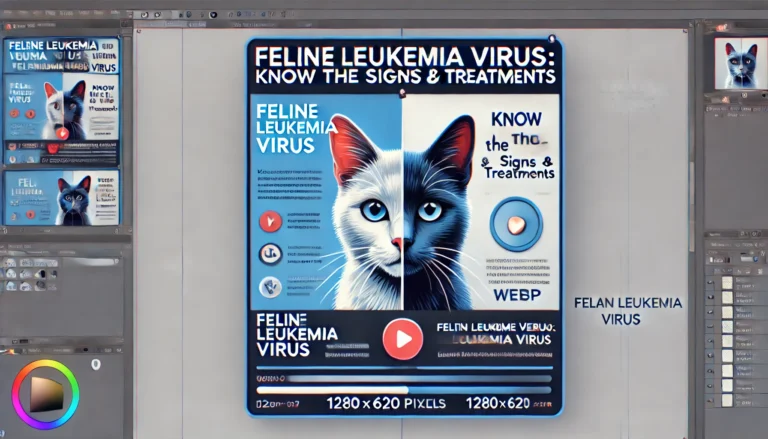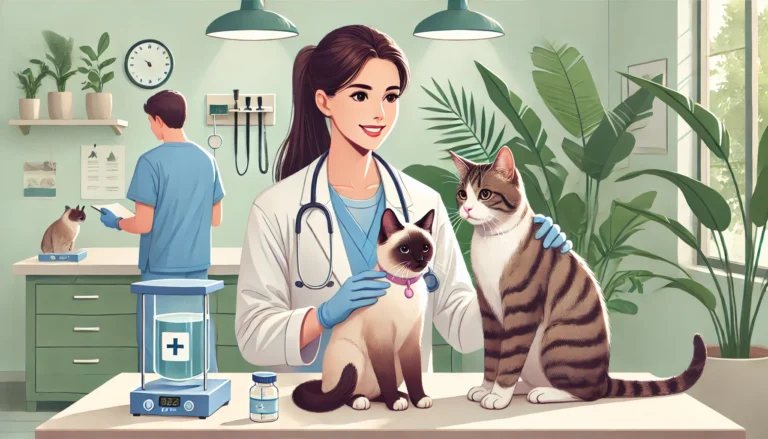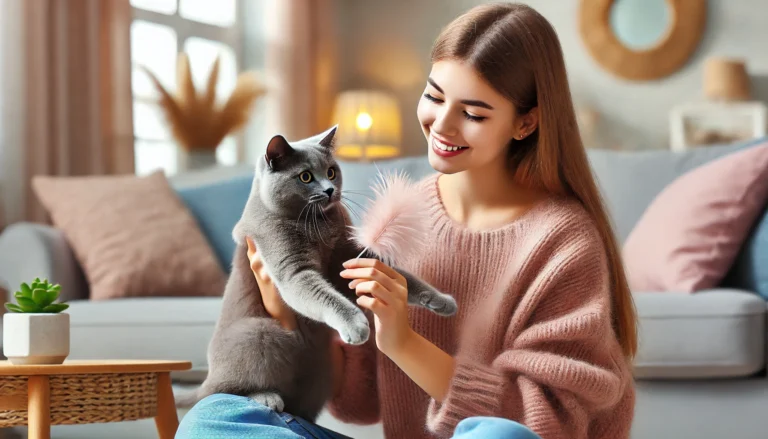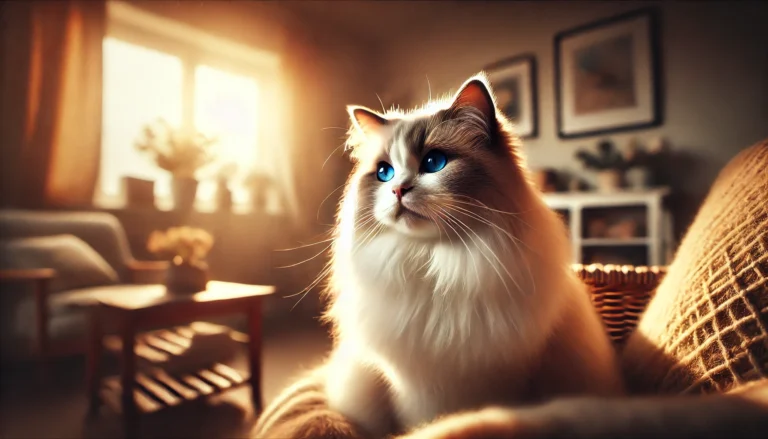How Long Do Cats Live? 10 Ways to Help Your Cat Live Longer!
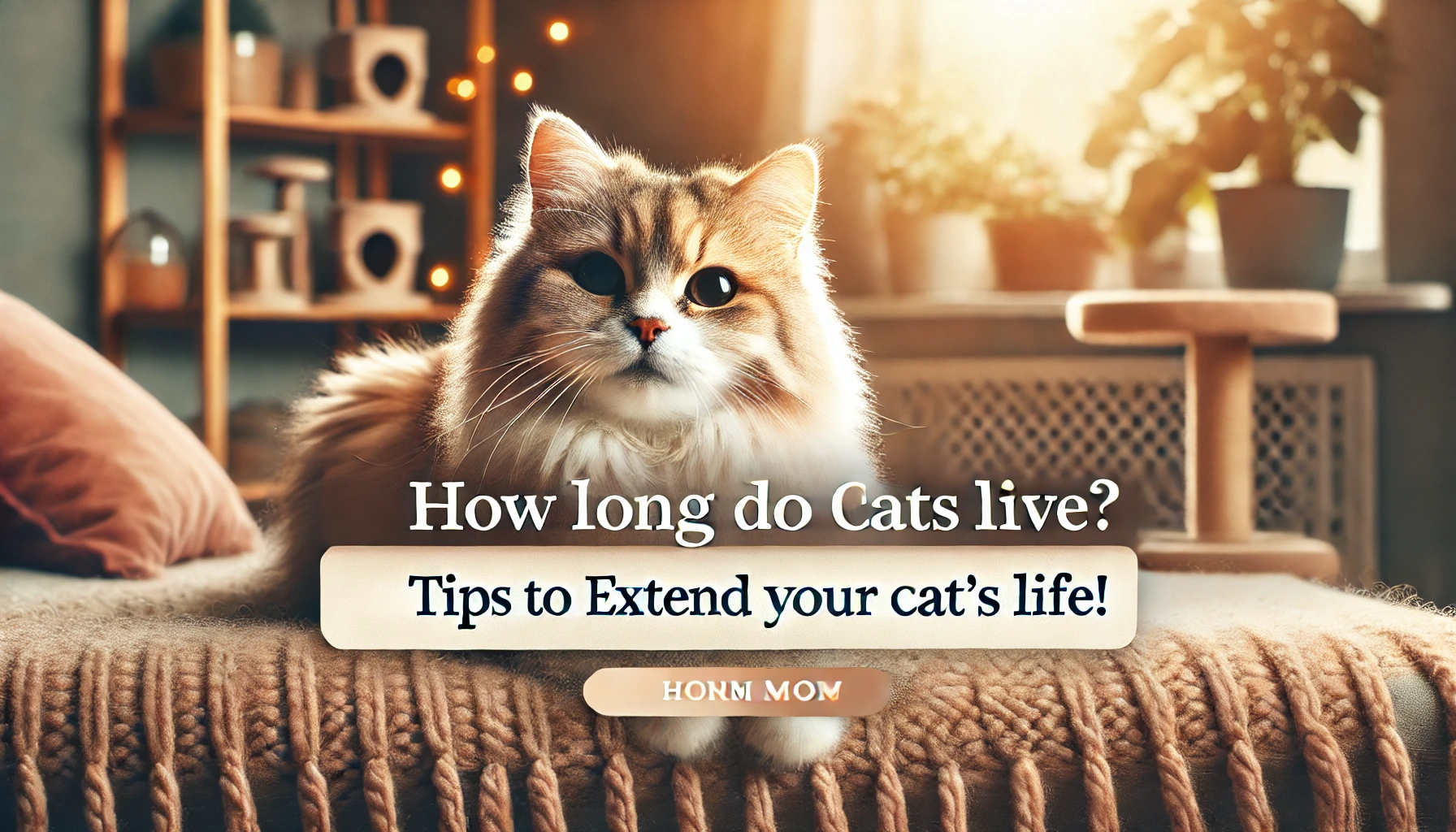
Cats bring joy and companionship to millions of homes, and naturally, we want our feline friends to stay with us as long as possible. But how long do cats live? The answer varies based on several factors, including genetics, lifestyle, and health care. Generally, a cat’s lifespan can range widely, with some cats living only 10 years and others reaching up to 20 years or more!
Understanding a cat’s life expectancy helps pet owners provide the best care, making it possible to extend their cat’s life and improve its quality. In this article, we’ll explore the average lifespan of a house cat, factors that impact longevity, and provide actionable tips for helping your cat live a long and healthy life.
Average Cat Lifespan
The average lifespan of a cat varies depending on factors like lifestyle and genetics. Generally, house cats live longer than their outdoor counterparts, thanks to the protection from outdoor dangers and access to regular veterinary care.
- Average House Cat Lifespan: An indoor house cat typically lives between 12 to 15 years, with many reaching closer to 20 years when given proper care.
- Outdoor Cats: Cats that spend a lot of time outdoors have a shorter life expectancy, averaging around 5 to 7 years. Outdoor risks like accidents, predators, and diseases significantly lower the life span of a cat that roams outside.
Some cats have even been known to reach extraordinary ages. For instance, the oldest recorded house cat, Creme Puff, lived to an astonishing 38 years! Such exceptional cases, however, are rare and depend on a mix of genetics, environment, and attentive care.
Here’s a quick breakdown of average cat lifespans for easy reference:
| Cat Type | Average Lifespan |
|---|---|
| Indoor House Cat | 12 – 15 years |
| Outdoor Cat | 5 – 7 years |
| Cats with Optimal Care | 15 – 20+ years |
Indoor vs. Outdoor Cat Lifespan
One of the most significant factors in determining how long do cats live is whether they reside primarily indoors or outdoors. The environment a cat lives in plays a crucial role in their life expectancy and overall health. Here’s a closer look at the differences:
Indoor Cats
Indoor cats enjoy longer lives thanks to a controlled environment. They are shielded from outdoor hazards like traffic, predators, and harsh weather. Indoor cats are also less likely to catch diseases from other animals or face injuries from accidents. As a result:
- Average Lifespan: 12 to 15 years
- Maximum Lifespan Potential: Up to 20+ years, with exceptional care
Outdoor Cats
Outdoor cats lead lives full of exploration, but these come with added risks. Road traffic, exposure to diseases, fights with other animals, and exposure to weather extremes all impact the lifespan of outdoor cats. They are also more susceptible to parasites and infections, which can go undetected without regular veterinary checks.
- Average Lifespan: 5 to 7 years
- Health Risks: Increased risk of injury, illness, and early death due to accidents or environmental dangers
Indoor-Outdoor Cats
Some owners allow their cats a combination lifestyle, with indoor living and occasional outdoor access. While this setup provides more freedom, it also requires caution. Indoor-outdoor cats can enjoy extended lives with routine veterinary care and protective measures like microchipping, vaccinations, and supervised outdoor time.

How Long Do Cats Live? Factors That Affect a Cat’s Lifespan
A cat’s lifespan depends on a mix of genetics, health care, environment, and lifestyle. Understanding these factors can help you make informed decisions to give your cat the best possible life. Here are some key elements that impact on how long do cats live:
1. Breed
Certain cat breeds are naturally long-lived, while others may have shorter lifespans due to genetic health issues.
- Long-Lived Breeds: Siamese, Burmese, and Russian Blue cats are known for their longevity, often reaching 15 to 20 years.
- Breeds with Shorter Lifespans: Breeds like the Maine Coon or Ragdoll may have slightly shorter lifespans, around 10 to 15 years, due to genetic predispositions to heart and joint issues.
2. Diet and Nutrition
A balanced diet is essential to a cat’s health and longevity. Proper nutrition supports immune function, helps prevent obesity, and keeps organs functioning well.
- Key Nutrients: Cats need protein-rich food that includes essential amino acids like taurine, which supports heart health.
- Obesity Risks: Overweight cats are at higher risk of diabetes, heart disease, and joint issues, which can reduce their lifespan.
3. Regular Veterinary Care
Routine vet check-ups help detect and treat health issues before they become severe.
- Vaccinations: Keeping up with vaccinations protects cats from potentially fatal diseases like feline leukemia.
- Parasite Prevention: Regular flea, tick, and worm treatments are essential, especially for outdoor cats.
4. Physical Activity and Mental Stimulation
Exercise and mental engagement improve a cat’s quality of life and prevent obesity and related illnesses.
- Exercise Needs: Indoor cats benefit from play sessions, climbing structures, and interactive toys.
- Mental Enrichment: Activities like puzzle feeders and training sessions stimulate a cat’s mind, helping prevent stress and anxiety.
5. Genetics and Hereditary Health Conditions
Genetics play a major role in a cat’s longevity, as some cats are predisposed to diseases like heart disease, kidney failure, or cancer.
- Screening for Health Risks: Knowledge of genetic issues can help owners take preventive measures for breeds prone to specific conditions.
Quick List: Major Factors Affecting Cat Lifespan
- Breed
- Diet and Nutrition
- Veterinary Care
- Exercise and Stimulation
- Genetics
Breed-Specific Lifespan Differences
Different cat breeds often have different average lifespans. While many domestic cats live well into their teens, certain breeds are genetically predisposed to either longer or shorter lives. Here’s a breakdown of lifespans for some popular cat breeds:
| Cat Breed | Average Lifespan | Health Notes |
|---|---|---|
| Siamese | 15 – 20 years | Known for longevity; prone to dental issues and respiratory conditions. |
| Burmese | 16 – 18 years | Generally healthy, with occasional risks of heart disease and cranial deformities. |
| Russian Blue | 15 – 20 years | Robust health, with some susceptibility to urinary tract issues. |
| Maine Coon | 10 – 15 years | Prone to hip dysplasia and heart disease (hypertrophic cardiomyopathy). |
| Ragdoll | 12 – 15 years | Known for calm demeanor; can develop heart issues and urinary tract problems. |
| Persian | 10 – 15 years | Prone to breathing difficulties and eye issues due to their flat face (brachycephalic features). |
| Bengal | 12 – 16 years | Generally healthy but may develop certain heart conditions like hypertrophic cardiomyopathy. |
| Abyssinian | 9 – 15 years | Highly active breed with risks of kidney issues and gingivitis if not well-maintained. |
| Domestic Shorthair | 12 – 15 years | Typically healthy and long-lived; lifespans vary with individual health and care. |
Why Breed Matters
While most domestic cats are hearty, purebred cats can have specific health concerns that may affect their longevity. Understanding these breed-specific health risks can help owners make informed care decisions and take preventive steps.
Signs of Aging in Cats
As cats age, they go through physical and behavioral changes similar to humans. Recognizing these signs of aging can help you provide the right care and make your cat’s senior years as comfortable as possible. Here are some common signs of aging in cats:
1. Changes in Activity Levels
Older cats tend to slow down and may show less interest in play or climbing. Arthritis and joint stiffness are common in aging cats, making it harder for them to jump or run.
- Tip: Provide soft bedding and ramps or steps to help your cat reach favorite high spots without strain.
2. Dental Issues
Dental disease is prevalent in senior cats, leading to bad breath, difficulty eating, and sometimes tooth loss.
- Tip: Schedule regular dental check-ups and consider using dental treats or toys to maintain oral health.
3. Weight Fluctuations
Some aging cats experience weight loss due to metabolic changes or decreased appetite, while others may gain weight from a lack of activity.
- Tip: Monitor your cat’s weight and consult your vet about senior-specific diets if you notice any significant changes.
4. Coat and Skin Changes
Older cats may develop a dull or thinning coat, as grooming may become more difficult due to arthritis or other discomforts.
- Tip: Assist with grooming by brushing your cat regularly to keep their coat healthy and reduce hairballs.
5. Behavior and Personality Changes
Aging cats might become more irritable or anxious due to pain, confusion, or sensory decline (sight and hearing loss).
- Tip: Maintain a stable environment and routine, and be gentle with handling. Use soothing aids, like pheromone diffusers, if anxiety becomes noticeable.
6. Increased Sleeping Time
Cats naturally sleep a lot, but senior cats tend to sleep even more. While normal, excessive sleepiness combined with other symptoms may indicate underlying health issues.
Recognizing these signs early and adjusting care accordingly can greatly enhance a senior cat’s quality of life.
Tips for Extending Your Cat’s Life
A healthy lifestyle, routine veterinary care, and proper mental and physical stimulation are essential to help your cat live longer. Here are some practical ways to extend your cat’s life and keep them happy and healthy:
1. Feed a Balanced, High-Quality Diet
Good nutrition is the foundation of a cat’s health and longevity. A diet rich in protein, healthy fats, and essential nutrients supports overall well-being and helps prevent obesity.
- Tip: Choose cat food with real meat as the main ingredient and avoid fillers like corn or soy. Consult your vet for recommendations on portion sizes and any dietary supplements.
2. Encourage Regular Exercise
Keeping your cat active helps prevent obesity, supports joint health, and provides mental stimulation. Indoor cats especially benefit from structured playtime.
- Tip: Use interactive toys like feather wands, laser pointers, or cat tunnels to keep your cat engaged. Set aside at least 15 minutes a day for active play.
3. Schedule Regular Veterinary Check-Ups
Routine vet visits allow for early detection of health issues, which can be critical for extending your cat’s life.
- Tip: Take your cat for an annual exam, and consider more frequent visits as they reach senior years (over age 10). Routine screenings can identify issues before they progress.
4. Prioritize Dental Health
Dental issues are common in cats and can lead to more serious health problems if left untreated. Healthy teeth and gums are essential for a longer life.
- Tip: Brush your cat’s teeth if possible, or use dental treats and toys designed to reduce plaque buildup.
5. Create a Stress-Free Environment
Stress affects cats more than we often realize, especially as they age. A calm, predictable environment promotes both mental and physical health.
- Tip: Maintain a consistent routine for feeding, playtime, and quiet time. Use cat-friendly spaces, like window perches or cozy beds, to give your cat safe places to relax.
6. Grooming Assistance
Older cats may struggle to groom themselves properly, leading to a decline in coat quality and skin health.
- Tip: Brush your cat regularly to prevent matting and reduce shedding. For cats with arthritis, gentle grooming can also offer comfort and improve circulation.
7. Provide Mental Stimulation
Keeping your cat’s mind active is as important as physical exercise, especially for indoor cats. Mental stimulation can delay cognitive decline and reduce boredom.
- Tip: Rotate toys, use food puzzles, and consider teaching your cat simple tricks. Even watching birds from a window or a cat-friendly YouTube video can be entertaining!
8. Keep Your Cat Indoors or Supervise Outdoor Time
Indoor cats live longer on average than outdoor cats, thanks to a safer, controlled environment.
- Tip: If your cat enjoys the outdoors, consider a secure outdoor cat enclosure or leash training to let them explore safely.
9. Hydrate and Monitor Water Intake
Proper hydration is vital, especially as cats age, since kidney issues are common in older cats.
- Tip: Use a water fountain, which encourages drinking, or add a little wet food to their diet to increase moisture intake.
10. Manage Age-Related Health Conditions
Many senior cats face conditions like arthritis, kidney disease, and thyroid issues. With early intervention and management, these conditions can be treated, improving quality of life.
- Tip: Discuss any age-related changes with your vet and explore treatment options, like joint supplements, kidney diets, or medication for hyperthyroidism.
These steps can have a meaningful impact on your cat’s life expectancy and well-being, allowing them to live a long and fulfilling life.
For your information
Making the decision to put a dog down is one of the hardest choices pet owners face. It’s a deeply personal and emotional decision, filled with concern, love, and compassion. Recognizing signs of suffering, assessing your dog’s quality of life, and consulting with a veterinarian can help guide you through this difficult time. Remember that choosing to end your dog’s suffering is a final act of love and kindness, ensuring they find peace.
Common Health Issues in Senior Cats
As cats age, they become more susceptible to various health problems. Understanding these common issues can help you take preventive measures or seek timely treatment. Here are some of the most frequent health concerns in senior cats:
1. Kidney Disease
Kidney disease is one of the most common illnesses in older cats. The kidneys play a critical role in filtering waste from the blood, but they can lose function as a cat ages.
- Symptoms: Increased thirst and urination, weight loss, loss of appetite, vomiting.
- Management: Prescription kidney diets, regular vet check-ups, and hydration support can help manage the disease.
2. Arthritis and Joint Issues
Arthritis causes joint pain and stiffness, affecting mobility and overall comfort. Although often undiagnosed, arthritis is highly prevalent in senior cats.
- Symptoms: Decreased jumping, difficulty climbing, irritability when touched.
- Management: Joint supplements, weight management, and creating a comfortable, accessible environment can alleviate symptoms.
3. Hyperthyroidism
Hyperthyroidism, or overactive thyroid, is common in older cats and is caused by an increase in thyroid hormone levels.
- Symptoms: Weight loss despite a good appetite, increased thirst and urination, hyperactivity.
- Management: Medications, dietary changes, and in some cases, surgical or radioactive iodine treatment are effective options.
4. Dental Disease
Dental disease, including gingivitis and periodontitis, can lead to painful inflammation and infections, potentially affecting overall health.
- Symptoms: Bad breath, difficulty eating, drooling, and red or swollen gums.
- Management: Regular dental cleanings, dental treats, and in-home dental care routines help prevent severe issues.
5. Diabetes
Diabetes is more common in overweight and older cats. If left untreated, it can lead to other serious health problems.
- Symptoms: Increased thirst and urination, weight loss, lethargy.
- Management: Insulin injections, diet changes, and weight management can help control diabetes in cats.
6. Cancer
Unfortunately, older cats are at higher risk of developing cancers, such as lymphoma or skin tumors.
- Symptoms: Unexplained weight loss, lumps, sores that don’t heal, loss of appetite.
- Management: Early diagnosis is key; treatment options include surgery, chemotherapy, or palliative care to improve quality of life.
7. Cognitive Dysfunction Syndrome (CDS)
Similar to dementia in humans, CDS affects cognitive functions in senior cats, leading to disorientation and behavioral changes.
- Symptoms: Confusion, increased meowing, forgetting litter habits, pacing.
- Management: Maintaining a predictable routine, providing environmental enrichment, and using supplements for cognitive health can help manage symptoms.
Summary Table: Common Health Issues in Senior Cats
| Health Issue | Symptoms | Management Options |
|---|---|---|
| Kidney Disease | Thirst, weight loss, vomiting | Diet changes, hydration, regular vet check-ups |
| Arthritis | Stiffness, reluctance to jump | Joint supplements, accessible living space, weight management |
| Hyperthyroidism | Weight loss, increased appetite | Medications, dietary changes, possible surgery |
| Dental Disease | Bad breath, difficulty eating | Regular dental care, dental treats |
| Diabetes | Thirst, weight loss, lethargy | Insulin, diet modifications, weight control |
| Cancer | Lumps, appetite loss, sores | Early diagnosis, surgery, chemotherapy, palliative care |
| Cognitive Dysfunction Syndrome | Disorientation, pacing | Routine, cognitive enrichment, supplements |
Understanding these health issues can help pet owners provide the right care for their senior cats and improve life expectancy through preventive care and timely intervention.
Longest Living Cats: Real-Life Examples
Some cats defy the odds and live well beyond the average lifespan. These cats serve as remarkable examples of longevity, inspiring pet owners to prioritize their own cats’ health and happiness. Here are a few famous, record-holding cats known for their long lives:
1. Creme Puff (38 Years)
The most famous long-lived cat is Creme Puff, who holds the Guinness World Record for the oldest cat ever recorded. Creme Puff lived an astonishing 38 years and 3 days, born on August 3, 1967, and passing away on August 6, 2005. Creme Puff’s owner attributed her long life to a unique diet and attentive care.
2. Baby (38 Years)
Baby, a cat from Minnesota, reportedly lived to be 38 years old. While not officially recognized by Guinness, Baby was known for a love of play and good health, which may have contributed to this impressive lifespan.
3. Poppy (24 Years)
Poppy, a tortoiseshell from the UK, held the title of the world’s oldest living cat at the age of 24. Known for her feisty personality and close bond with her family, Poppy enjoyed a balanced diet and regular vet care.
4. Rubble (31 Years)
Rubble, a Maine Coon from England, lived up to 31 years. His owners credit Rubble’s long life to regular health check-ups, a calm home environment, and a healthy diet.
5. Scooter (30 Years)
Scooter, a Siamese from Texas, lived to 30 years. Known for being a playful and adventurous cat, Scooter enjoyed an active lifestyle, which may have contributed to his long life.
Key Takeaways from Long-Lived Cats
These remarkable cats share several common factors that likely contributed to their longevity:
- Balanced, Varied Diets: Many of these cats were provided with high-quality, protein-rich diets, sometimes with added variety or unique nutrients.
- Routine Health Care: Regular vet check-ups were a staple in many of their lives, helping to prevent or manage any health issues early on.
- Stable, Loving Environments: A low-stress home environment is known to contribute to a cat’s overall well-being and can impact their longevity positively.
- Physical Activity: Many of these long-lived cats were playful, even in their senior years, which helped maintain both physical health and mental engagement.
These extraordinary lifespans remind us of the potential for cats to live long, fulfilling lives when given the right care, environment, and diet.
Conclusion
Cats bring love, joy, and companionship into our lives, and with the right care, they can stay by our side for many years. On average, how long do cats live depends on various factors, including genetics, lifestyle, and the quality of care they receive. Indoor cats tend to have longer lifespans than outdoor cats, and some breeds are genetically predisposed to live longer. But regardless of breed, all cats can benefit from a healthy diet, regular vet visits, mental stimulation, and a stress-free environment.
By understanding the factors that impact a cat’s lifespan and recognizing signs of aging, pet owners can help their cats lead longer, healthier lives. Famous long-lived cats like Creme Puff and Rubble show us that with the right approach, cats can live well into their 20s or even 30s. Taking preventive measures and investing in your cat’s health from a young age sets the foundation for a happy, thriving life.
Whether you’re a seasoned cat owner or a new pet parent, these insights can help you give your cat the best possible care and, hopefully, a long and joyful life.
FAQs
1. What is the average lifespan of a house cat?
The average lifespan of a house cat is 12 to 15 years, although many can live into their late teens or early 20s with good care.
2. Do indoor cats live longer than outdoor cats?
Yes, indoor cats typically live longer, averaging 12 to 15 years, while outdoor cats face more risks and usually live between 5 to 7 years.
3. What are the common signs of aging in cats?
Signs of aging in cats include reduced activity, weight changes, dental issues, and changes in coat quality or grooming habits.
4. Can diet impact on how long do cats live?
Absolutely. A balanced, protein-rich diet supports a cat’s health, helping prevent obesity and other age-related illnesses.
5. What are some long-lived cat breeds?
Breeds known for longer lifespans include Siamese, Burmese, and Russian Blue cats, which can often live 15 to 20 years or more with proper care.

